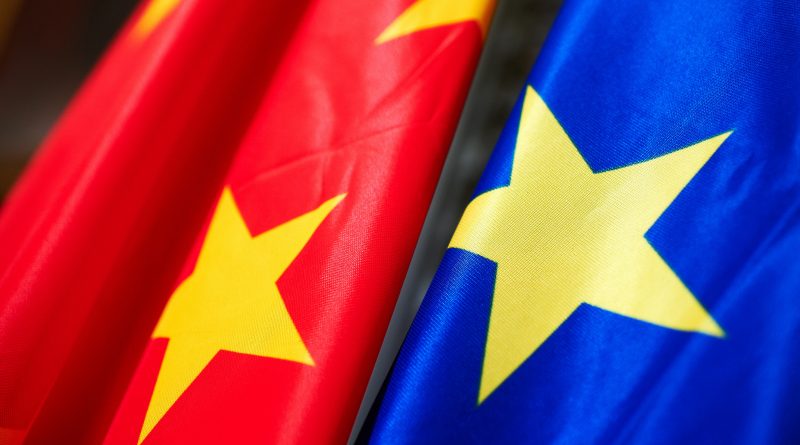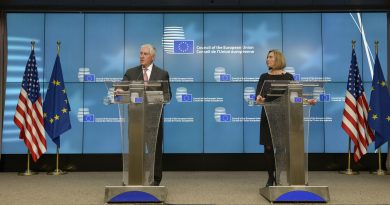10 Things to Read about the Relations between the EU and China
In the increasingly complex world we live in, the relations between China and the European Union have reached unparalleled proportions. The scientific articles and other documents that I have selected aim to bring light to these elaborate and intricate relations between the two powerhouses, covering a wide range of topics and perspectives.
1. Undermining Western democracy promotion in Central Asia: China’s countervailing influences, powers and impact, Aijan Sharshenova and Gordon Crawford (2017), Central Asian Survey 36(4), pp. 453-472.
Although democracy is likely the most common system of government throughout the world, the population of the world’s largest purported democracy fails to agree. China has been a single-party republic since 1949, with a civil war dashing the sovereign state. This article examines the mechanisms and strategies that each country develops in the promotion of its system of government. The general conclusion is that the EU makes a much stronger effort to promote democracy, inside and outside its borders, “through tailored projects and considerable funding”, while China “does not sponsor (…) any programmes or initiatives that proactively promote autocracy”.
2. Democracy promotion and China: blocker or bystander?, Dingding Chen and Katrin Kinzelbach (2015), Democratization 22(3), pp. 400-418.
This article is an example of the China-EU relations, constituting of a partnership between the University of Macau and two European higher education institutions, and its main goal is to understand China’s position on the promotion of democracy. Although prior to the aforementioned article, the conclusions don’t differ substantially. China remains “as an indifferent bystander of democratization” (Chen and Kinzelbach, 2014), although regarding its own territory, it tends to quieten domestic strains for democratization.
3. Contesting a Place in the Sun: On Ideologies in Foreign Markets and Liabilities of Origin, Ans Kolk and Louise Curran (2015), Journal of Business Ethics 142(4), pp. 697-717.
Kolk and Curran attempt to analyse the intricate relation between ideology and business representation, scrutinizing the solar panel quarrel. Despite its density and complexity, the article leaves no margin for doubt: China is seen as somewhat of an outsider on the current world panorama. It presents a considerably intricate checklist of the pros and cons of the EU-China interactions. On the one hand, China showcases an unparalleled level of competitiveness which could boost EU economy. On the other hand, its practices and ideologies don’t always follow the European rule of law, consequently creating a collision of positions between the two powerhouses.
4. The impact of China’s imports on European Union industrial employment, Martina Basarac Sertić, Anita Čeh Časni, Valentina Vučković (2016), Economics of Transition Journal 22(1), pp. 91-109.
This article focuses on labour markets and their stability in a globalized world where China has become the EU’s largest stockpile source. The authors analyse several perspectives on the matter, agreeing that China’s imports do have an impact on employment, with its sign depending on a long-run or short-run analysis. Short-run results showcase a positive influence on recruitment, and vice-versa in the long-run. The last sentence of the article denotes a tone of advice: “by changing the (un)employment structure, trade with China represents a long-term issue that could have not only economic but also social consequences” (Sertic, Casni and Vuckovic, 2016).
5. Network structure of scientific collaborations between China and the EU member states Lili Wang, Xianwen Wang, Niels J. Philipsen (2016), Scientometrics 113(2), pp. 765-781.
Scientific research has continuously been a binding aspect in the relations between the EU and China. In this study, the authors analyse fourteen years worth of data relative to co-authorship as a result of China-EU collaborations. It is stated that this partnership has greatly evolved, in size as well as diversity. Whilst these scientific collaborations have long been settled with some of the founding members of the EU, research projects in the smaller states tend to have a more international facet, therefore meeting China’s goals. As larger countries have the opportunity to develop intra-collaborations, smaller nations represent open doors for foreign researchers.
6. A comparison of the gender-specificity of age of consent legislation in Europe and China: Towards a gender-neutral age of consent in China? Guangxing Zhu and Suzan van der Aa (2017), European Journal on Criminal Policy and Research 23(4), pp. 523-537.
This article analyses the controversial subject of age of consent, comparing Europe and China, through the scrutiny of legislation. One of the main arguments is that China’s development area has undergone ‘westernization’, namely concerning legal matters. Notwithstanding, the matter of age of consent has scantily made any progresses, particularly regarding age itself and its lack of gender neutrality. While Europe has evolved into a nonbiased society when it comes to protecting children, regardless of their gender, China still holds prejudice on the matter, privileging the protection of female victims. What is left for Europe to change Chinese minds and regulation?
7. The impact of the European Union’s policy towards China’s intellectual property regime Natalia Wyzycka and Reza Hasmath (2016), International Political Science Review 38(5), pp. 549-562.
Although China has joined the World Trade Organization in 2001, the matter of Intellectual Property (IP) is still one over which the EU and China have failed to find much common ground. The fact that the Asian powerhouse disrespects IP laws, manufacturing cheaper versions of European products, puts at risk the cohesiveness of this alliance. The EU has enhanced IP protection through legislation, given that the unlawful actions perpetrated by Chinese companies will endanger the strength of EU-China partnerships. Such enhancement will also reinforce the misled idea that China does not develop original products, and that their only achievement is in fact the low-cost labour for international companies.
8. The impact of U.S. withdrawal from the Paris Agreement on the carbon emission space and mitigation cost of China, EU, and Japan under the constraints of the global carbon emission space Han-Cheng Dai, Hai-Bin Zhang and Wen-Tao Wang (2017), Advances in Climate Change Research 8(4), pp. 226-234.
This article admits that the global benefits from the US’s withdrawal from the Paris Agreement are scarce, being only in favour of the United States themselves. This turnout poses a threat to the remaining 195 parties involved, as their carbon emission space will be diminished and their alleviation heightened. Accordingly, the macroeconomic effects will be close to irreversible and might compromise international diplomacy, as this subject becomes a burden to the countries that did sign the Agreement. In this sense, the EU-China relations will be put at risk, as requirements on countries will be more severe, and will fuel the necessity for further global climate governance.
9. Three Scenarios for EU-China Relations 2025 Johannes Gabriel and Susanne Schmelcher (2017), Futures Journal 97, pp. 26-34.
This article proposes three distinct scenarios in EU-China relations: 1) the US losing its centre-stage position and China emerging from a trade war where the EU remains united despite Brexit; 2) the war in Syria finally ending while sustainability, climate and taxes take the main roles in a scenario where the EU and China work together and the US crumbles; 3) a fragmented EU, abandoned by one of its power sources and led by the newly risen right-wing, China becoming a peace-keeper along with the US, signing a Free Trade Agreement and thus controlling the world economy.
10. The increasing role of the EU’s culture, education and science diplomacy in Asia Laurence Vandewalle (2015), Directorate-General for External Policies, Policy Department, European Parliament
This EP endorsed policy paper addresses the cultural exchange between the EU and Asia, notably China. The latter has maintained a strategic partnership with the EU since 2003 and, despite strikingly positive developments, one problem remains: the lack of knowledge about the EU in Asia. The policy paper lists the various programmes created by the EU to expand the educational transfer between the two global powerhouses, also mentioning the controversial subject of the Confucius Institutes. Nevertheless, the conclusion is clear: there is a lot still to be done, especially given the paradox of China being the “largest recipient of EU funds” and the sheer divergence in both their views and goals.
Photo by Friends of Europe / CC BY 2.0
![]() This work is licensed under a Creative Commons Attribution-NonCommercial-ShareAlike 4.0 International License.
This work is licensed under a Creative Commons Attribution-NonCommercial-ShareAlike 4.0 International License.




